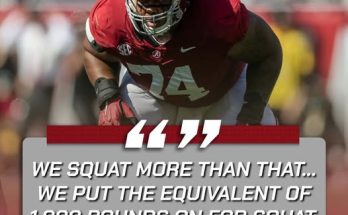In the NBA Finals, the difference between winning and losing often comes down to more than just who scores the most points. It’s about execution, adjustments, and finding ways to take the other team out of its rhythm. For the Oklahoma City Thunder, Game 2 against the Indiana Pacers was all about defensive dominance, and at the center of it was Lu Dort. Known league-wide as one of the most relentless and physically imposing defenders, Dort took on the challenge of guarding Tyrese Haliburton—Indiana’s offensive engine and the man with the keys to one of the league’s most exciting fast-paced offenses. The result? Haliburton’s game plan didn’t just get slowed down; it got completely dismantled.
From the opening tip, the message was clear: Dort wasn’t going to give Haliburton an inch. Every dribble, every pass, every attempt to initiate offense came with a wall of resistance in the form of Dort’s broad shoulders and quick feet. It wasn’t just about bodying him up and forcing him into tough shots; Dort’s defense was surgical. He anticipated passing lanes, used his physicality without fouling, and applied a brand of pressure that didn’t relent for a single possession. Haliburton, usually calm and collected, looked like a man constantly searching for a window that wasn’t there. This wasn’t just a good defensive performance—it was a complete strategic shutdown.
The Pacers’ offense thrives on Haliburton’s ability to read the floor, make rapid decisions, and get his teammates involved. He’s the kind of point guard who can thread passes through the tightest of gaps, punish defenders with his three-point range, and push the pace until opponents are gasping for air. But all of that becomes meaningless when the primary ball handler can’t find any comfort. Dort’s defensive stance was low and wide, his hands active, his eyes constantly reading Haliburton’s body language. The moment Haliburton tried to set up a pick-and-roll, Dort navigated screens like a shadow, refusing to be screened out of the play. It’s the kind of effort that doesn’t always show up in the box score, but anyone watching could see how dramatically it affected the flow of the Pacers’ offense.
What made Dort’s defensive performance so suffocating was how personal it felt. This wasn’t defense by the numbers—it was defense fueled by pride. He wasn’t simply trying to limit Haliburton’s scoring; he was trying to strip away his control of the game entirely. When a point guard loses that control, the whole team feels it. The spacing collapses, the ball sticks, and possessions start to end in desperation shots. That’s exactly what the Thunder wanted, and Dort delivered it with intensity. Every possession against Haliburton felt like a battle, and Dort never once took his foot off the gas.
By the second quarter, it was clear the Pacers were struggling to find an answer. Haliburton was being forced to give up the ball earlier than he wanted, which disrupted their timing. The shooters weren’t getting clean looks, the cutters weren’t finding open lanes, and the pace—the Pacers’ greatest weapon—was nowhere to be found. Indiana thrives when they’re dictating tempo, but Dort’s individual defensive effort was like throwing a wrench into the gears of a finely tuned machine. The Thunder’s defensive rotations clicked behind him, but it all started with Dort’s ability to neutralize the head of the snake.
The physical element of Dort’s game cannot be overstated. At 6’3” and built like a linebacker, he’s one of the few guards in the league who can match quickness with brute force. Haliburton, despite his size and craft, struggled to create separation. Whenever he tried to use his handle to shake Dort, he found himself facing a chest that didn’t move. Whenever he tried to pull up, Dort’s contests were immediate and suffocating. Even in transition, where Haliburton often shines, Dort was right there, sprinting stride for stride, cutting off angles before they even opened.
It wasn’t just a physical battle—it was mental. Dort got into Haliburton’s head by making every possession feel like a test. By the third quarter, you could see Haliburton hesitate on drives, second-guess passes, and even pass up shots he normally takes without thinking. That’s the hidden value of an elite on-ball defender: once you plant doubt in the mind of an offensive player, you’ve already won half the battle. The Pacers, forced to look elsewhere for creation, found themselves running a less efficient offense, playing into the Thunder’s hands.
Offensively, Dort chipped in where he could, but his night wasn’t about scoring—it was about setting a tone. The Thunder fed off his energy. Every stop he got, every deflection, every contested shot gave Oklahoma City another opportunity to run and put pressure on the Pacers at the other end. This synergy between defense and offense is what great playoff basketball is built on, and Dort was the spark plug.
In the NBA Finals, stars often grab the headlines for their scoring explosions or clutch shot-making. But this game was a reminder that sometimes, the hero of the night is the guy who makes sure the other team’s star never gets going in the first place. Haliburton is as dangerous as any point guard in the league when he’s in rhythm, but Dort never allowed him to find it. And when the Pacers’ offense sputters, their chances of keeping up with Oklahoma City shrink dramatically.
Thunder coach Mark Daigneault knew exactly what he was getting when he tasked Dort with this matchup. There’s a reason Dort has built a reputation as one of the NBA’s most feared defenders—he thrives in moments where the margin for error is razor-thin. His defensive discipline, combined with sheer willpower, makes him the kind of player you want in high-stakes games. Game 2 was a perfect showcase of why his value extends far beyond traditional stats.
For Haliburton, this was a test of patience and adaptability. The Finals are about making adjustments, and he’ll have to find ways to counter Dort’s physicality and anticipation. That might mean quicker decisions, more off-ball movement, or leaning on his teammates to initiate offense. But as long as Dort remains locked in at this level, nothing will come easy.
The DORTure Chamber isn’t just a clever nickname—it’s a real, suffocating environment where offensive stars go in confident and come out frustrated. Haliburton entered this series with momentum, swagger, and the ability to bend defenses to his will. In Game 2, Dort bent the game right back at him. Every dribble was contested, every pass was pressured, and every shot came with a shadow in his face. For a player who thrives on flow, being forced into constant discomfort can be the ultimate disruption.
By the final buzzer, the story of the game wasn’t about who hit the biggest shots or who put up the most points—it was about how one player completely altered the dynamics of the opposing team’s offense. Dort’s defensive masterpiece didn’t just help secure a win; it sent a message that in this series, Haliburton won’t have the freedom he’s used to. If the Pacers want to reclaim control, they’ll have to do it with Dort looming over every possession.
This is what makes playoff basketball so fascinating. The stars will shine, but the grind of a seven-game series often comes down to matchups and moments like this. Dort’s lockdown on Haliburton was more than just good defense—it was a declaration that the Thunder aren’t going to let Indiana dictate terms. For Oklahoma City fans, it was thrilling. For Pacers fans, it was alarming. And for Haliburton, it was a problem that needs solving fast.
Welcome to the DORTure Chamber, where comfort zones vanish, game plans crumble, and elite guards are forced to work harder than they ever have. Tyrese Haliburton walked in with the confidence of a floor general ready to lead his team to victory. He walked out having faced one of the most relentless defensive performances the Finals have seen in recent memory. In the chess match of the NBA Finals, Lu Dort just made the first move—and it was check.



